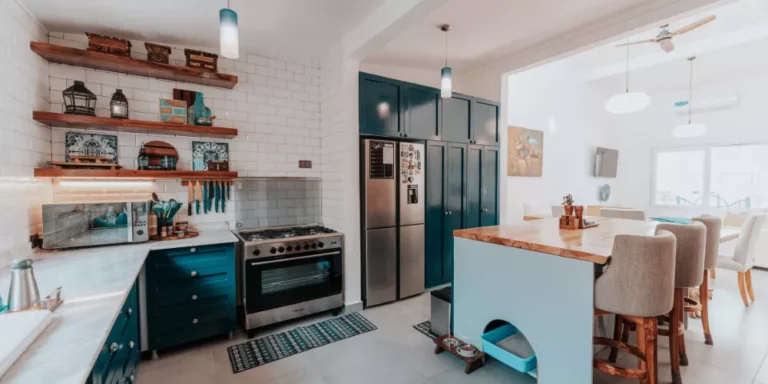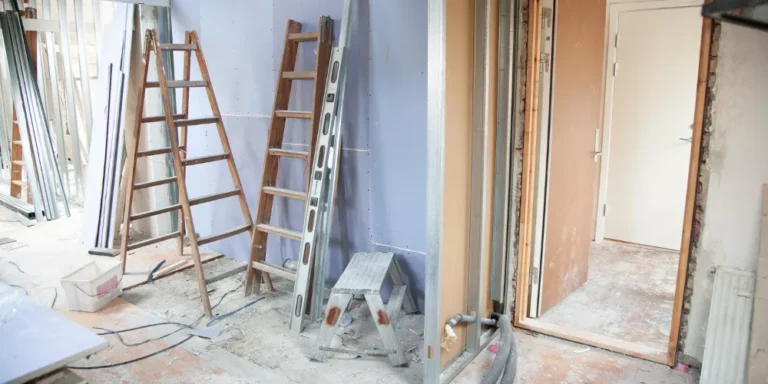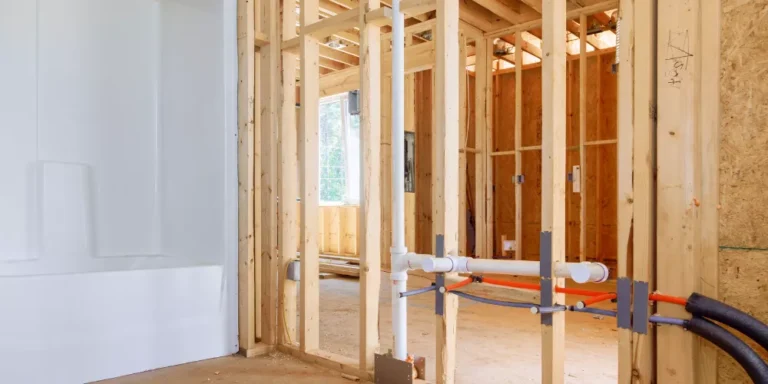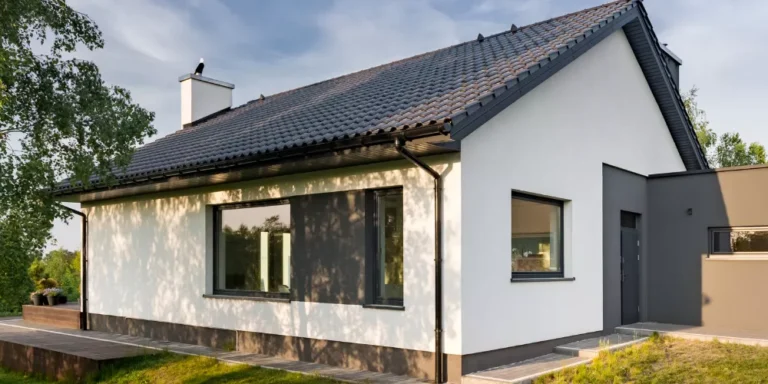How can I design a pet-friendly home renovation
Designing a pet-friendly home has become an important consideration for homeowners across the USA. Pets are part of the family, and creating spaces that are safe, comfortable, and practical for them can improve the quality of life for both pets and owners. Many traditional home designs focus only on aesthetics or functionality for humans, often leaving pets at risk of injury or discomfort. A pet-friendly home considers flooring, furniture, lighting, storage, and outdoor areas, making life easier for pets and their owners. Home renovations that include pet-focused design can prevent accidents, reduce damage, and save money on repairs over time. They also make the home more appealing to buyers who have pets or plan to adopt them. From choosing non-toxic materials to creating designated pet zones, there are many ways to integrate pets seamlessly into the design. Even small changes, like adding built-in feeding stations or easy-to-clean surfaces, make a big difference. Thoughtful design also supports pet health, with spaces for exercise, rest, and proper hygiene. This guide explains how to plan and execute a home renovation with pets in mind, ensuring comfort, safety, and style. Following these strategies helps homeowners enjoy a functional, beautiful home while meeting the needs of their furry friends.
How can I design a pet-friendly home renovation
Designing a pet-friendly renovation focuses on creating safe, durable, and convenient spaces for pets. The goal is to protect pets, reduce wear and tear on the home, and make everyday life easier. Here are the most important aspects to consider.
1. Choosing durable and scratch-resistant flooring
Durable flooring is essential in a pet-friendly home. Pets, especially dogs and cats, can scratch or damage flooring over time. Materials like tile, vinyl, and high-quality laminate are resistant to scratches and easy to clean. Hardwood floors can work if sealed properly, but they require more maintenance. Avoid carpets in high-traffic areas, as they can trap hair, dirt, and odors. Floors should also be slip-resistant to prevent injuries. Consider waterproof options near water bowls or litter boxes. Flooring with a slightly textured surface provides better traction for pets. In kitchens and mudrooms, choose materials that can handle spills and scratches. Using rugs in strategic areas adds comfort without sacrificing cleanliness. Durable flooring protects both your pets and your investment.
2. Creating designated feeding and watering areas
Pets need a safe and organized space for food and water. Placing feeding stations in a quiet corner reduces mess and traffic in busy areas. Use washable mats under bowls to catch spills. Built-in or raised feeding stations help reduce strain on pets’ necks and prevent tipping. Consider storage solutions for food and supplies nearby. Keeping the area clean reduces odors and maintains hygiene. For multiple pets, provide separate bowls to avoid conflicts. Consider automatic feeders for convenience during busy days or vacations. Organizing this space makes mealtime safer and more enjoyable for pets.
3. Designing safe outdoor spaces
A pet-friendly home should include secure outdoor areas. Fenced yards prevent pets from escaping and protect them from wildlife or traffic. Gates and locks should be sturdy and easy for humans to operate. Incorporate shaded areas to protect pets from heat. Non-toxic plants and landscaping are important to avoid accidental poisoning. Paths or designated potty areas help keep the yard clean. Adding outdoor water stations is also beneficial. Pet-friendly outdoor flooring, like artificial grass or rubberized surfaces, can prevent mud and protect paws. Spaces for play, exercise, and relaxation encourage healthy habits. Safe outdoor areas increase comfort and peace of mind for homeowners.
4. Installing pet-friendly gates and barriers
Gates and barriers help control where pets can go inside the home. Baby gates or custom barriers can block access to dangerous areas, such as kitchens, stairs, or garages. Choose gates that are tall enough to prevent jumping over and sturdy enough to withstand pets’ pressure. Retractable gates are convenient for temporary use. Barriers can protect furniture and delicate décor from pets. Sliding or swinging gates can provide flexibility in open-concept homes. Strategic placement helps pets feel safe and prevents accidents. Using gates effectively makes the home safer for pets and reduces homeowner stress.
5. Selecting furniture that withstands wear and tear
Furniture in a pet-friendly home should be durable and easy to clean. Upholstery with tight weaves or leather surfaces resists hair, scratches, and stains. Slipcovers are useful for added protection and easy washing. Avoid delicate fabrics like silk or velvet that can be damaged by claws. Choose sturdy materials that do not tip over easily. Pet-friendly furniture also considers comfort for pets, with spots for resting or sleeping nearby. Incorporating built-in seating with pet beds underneath can save space. Using furniture strategically protects both the home and pets.
6. Incorporating pet storage solutions
Pets require food, toys, grooming tools, and accessories. Integrating storage into a renovation keeps the home organized. Cabinets, shelves, or built-in cubbies work well for supplies. Hidden compartments can keep dangerous items like medications or cleaning products away from pets. Dedicated storage also helps reduce clutter in living areas. Labeling storage makes items easy to find and return. Pet storage areas near feeding stations, litter boxes, or grooming zones improve efficiency. Well-designed storage solutions support cleaner, safer, and more functional spaces.
7. Designing litter box and waste management areas
For cats, a proper litter box area is crucial. Choose a quiet, low-traffic spot with good ventilation. Consider built-in enclosures to hide the box while allowing easy access for cleaning. For dogs, create designated potty zones, either indoors or outdoors. Use waterproof materials for floors in these areas. Storage for cleaning supplies and waste bags nearby improves convenience. Separating waste management areas from living and dining spaces enhances hygiene. Accessible design encourages consistent use and reduces accidents. Thoughtful planning of waste zones protects both pets and the home environment.
8. Choosing non-toxic and pet-safe materials
Renovations should use materials that are safe for pets. Non-toxic paints, sealants, and finishes reduce the risk of chemical exposure. Avoid poisonous plants, carpeting adhesives, or treated wood that could harm pets if ingested. Flooring, furniture, and countertops should be pet-friendly and safe for chewing or scratching. When using new materials, check labels for toxicity warnings. Pet-safe materials contribute to long-term health for animals and peace of mind for homeowners.
9. Creating quiet and cozy pet spaces
Pets need their own comfortable areas to rest and relax. Incorporate built-in beds, alcoves, or cozy corners. Consider soundproofing or quiet zones for anxious pets. Add soft bedding that is washable and durable. Placing these areas near human activity allows pets to feel included, while quiet spaces give them privacy. Windows with low sills can allow pets to watch outside safely. Elevated beds or platforms benefit older pets with joint issues. Comfortable, private spaces enhance pet happiness and reduce stress for both pets and owners.
10. Planning for easy cleaning and maintenance
Pet-friendly renovations should focus on easy cleaning. Smooth surfaces, removable mats, and washable fabrics reduce time spent maintaining the home. Avoid complicated materials that trap hair, dirt, or odor. Consider ventilation and air filtration to reduce pet dander. Floors and counters in feeding or litter areas should allow quick cleaning. Built-in grooming or washing stations make bathing pets easier. Planning for cleaning during the design stage improves functionality and reduces long-term effort. A home that is simple to clean keeps both pets and humans happy.
Conclusion
Designing a pet-friendly home renovation in the USA requires thoughtful planning, careful material selection, and attention to safety. From durable flooring to secure outdoor spaces, each design element should balance aesthetics with functionality. Pet-friendly homes are not only safer for animals, but they also reduce damage, save cleaning time, and improve comfort for homeowners. Incorporating storage, designated feeding areas, and quiet resting zones enhances daily life for pets and humans alike. Upgrades like pet gates, non-toxic materials, and easy-to-clean surfaces make the home practical while maintaining style. Outdoor areas, proper lighting, and ventilation contribute to overall wellbeing. Pet-friendly renovations also increase resale appeal, as many buyers value homes ready for animals. Investing in thoughtful design ensures pets feel safe and loved while maintaining a clean, organized, and functional home. Homes built with pets in mind are happier, healthier, and more enjoyable for everyone. Following these steps creates a harmonious environment where pets and humans coexist comfortably and safely.






